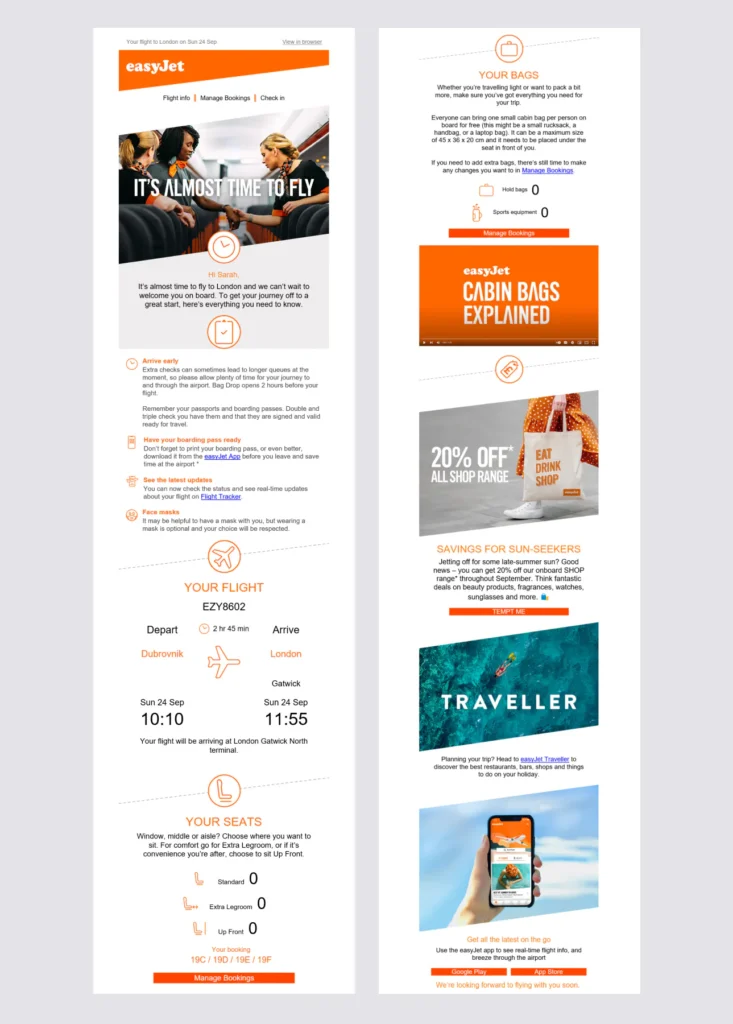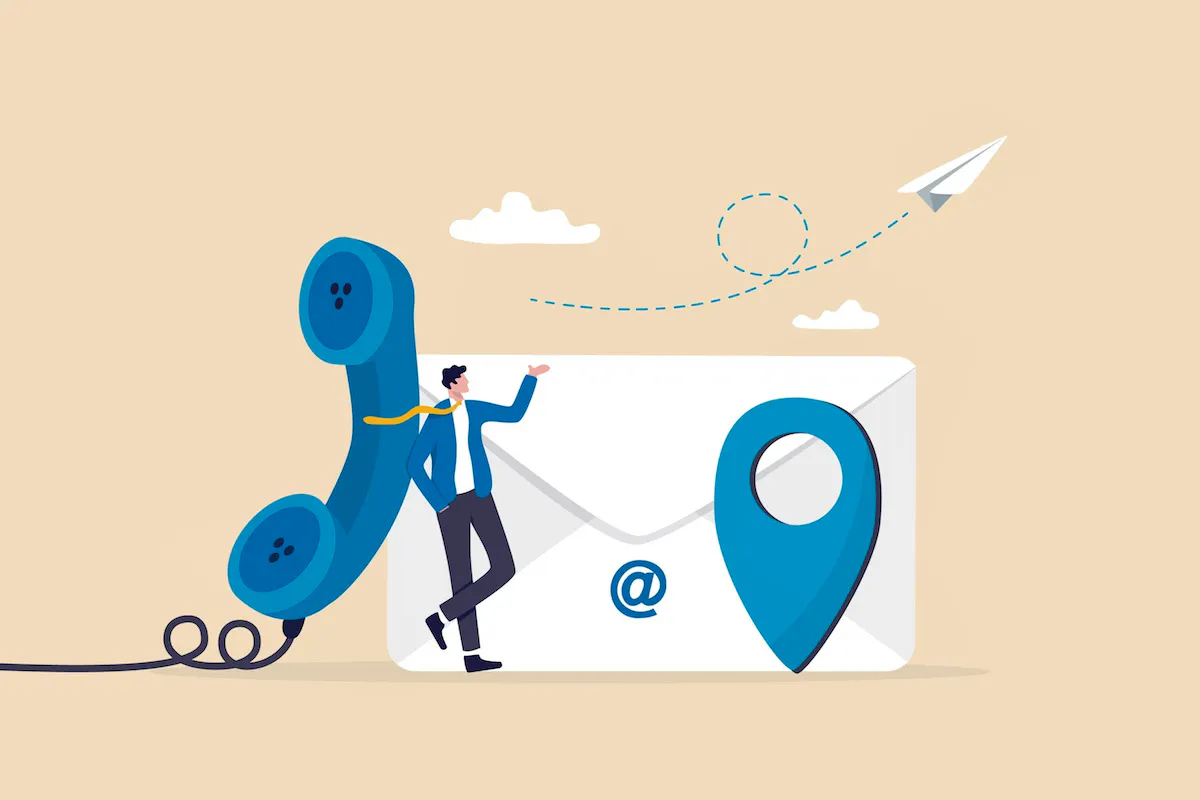‘Helpful email marketing’: Finding the right blend of product, brand and content
This strategic approach balances customer and brand goals, considering every email as a service-oriented message, even when the ultimate goal is to sell.
Achieving the correct balance between using email as a sales tool and using it as a value-adding information and entertainment tool is the key to success. It is also an important part of a brand’s email value proposition.
Customer experience-focused email marketing understands that both customers and marketers bring sets of goals to the email experience. Marketers need to balance their commercial goals with providing value to those receiving emails. By focusing email messages on helping customers achieve their goals, marketers will, in turn, achieve theirs. Helpful, personalised and customer-centric messages are more likely to achieve this balance than emails that centre exclusively on brand-driven content.
Kath Pay, author of Econsultancy’s Email Best Practice Guides, has named this process of delivering customer-centric emails rather than brand-driven content ‘helpful email marketing’. Instead of basing the customer relationship on transactions alone, it frames every email as a customer service-oriented message, even when the ultimate goal is to sell.
What is helpful email marketing?
Helpful email marketing puts customers first in everything, beginning with the email strategy. The organisation uses its expertise in acquisition practice and messaging while harnessing all it knows about its customers to deliver value with every message. It recognises that even though a company sets goals that an email team must meet, customer cooperation is required to achieve those goals.
Creating value in content is particularly important in the B2B environment, as sales cycles can often be longer. It is crucial to keep engagement up over this time period, while nudging recipients towards an offering and ensuring the brand remains front of mind.
As discussed in Econsultancy’s Quick Guide to Why Email Still Matters and Email Marketing Best Practice: Copywriting report, this concept of helpful email marketing gained traction during the Covid-19 pandemic. During this period, many brands found consumers were more receptive to communications and especially to messages that showed them how to manage during the crisis. These emails were positioned to place customer concerns above commercial goals.
Helpful email marketing involves providing information that will be useful or beneficial to the target audience, such as guides or demos. With this approach, marketers can also endeavour to position themselves as the experts in their fields, providing a place where audiences can turn for important information, guidance or best practice.
Marketers can also think about how different types of content could help create a sense of community. This makes their audiences feel like members of that community rather than numbers in a database.
The following example from EasyJet demonstrates a blend of valuable content and product-specific messaging (Figure 1). The email provides all the information a passenger would need to fly without a hitch.
Figure 1: Example of a balance of valuable content with ‘selling’

Source: EasyJet
Getting the balance right
Striking a balance between being helpful while selling can be challenging. Many company newsletters are too promotional, while others do not sell hard enough and manage to avoid showcasing their latest offerings.
What often gets lost in the discussion is the role that email plays in the transactional process. Email is the vehicle that carries the customer to the landing page where the conversion happens. That does not mean the email message should be a stripped-down poster that has nothing more than a few lines of content and a call-to-action button. Rather, the email’s job is to intrigue the customer enough to click the button and convert via a landing page designed to close the sale most effectively.
This model will continue to govern the email environment even as marketers experiment with technology like AMP for Email, which promises to increase interactivity in email (specifically within inbox providers Gmail and Yahoo), allowing for conversions to happen in the message instead of on a landing page.
Until the day comes when every email message within every inbox can both begin and conclude a transaction, marketers should focus their efforts on using email as the launchpad to the conversion. (For a detailed discussion about AMP for Email, see Econsultancy’s report on Email Marketing Best Practice: Layout and Creative.)
As a key customer communications tool, email should educate new customers about the brand values while reinforcing brand messages for established customers. This can be achieved through the brand identity, a strapline or container indicating the brand promise or links through to the main products within a newsletter heading; an approach used by many.
A high-level approach in a B2B newsletter could highlight real-world projects that use the service, products or technology the company produces. Links in the newsletter could lead to articles that focus on the impact rather than the product itself.
Many communications require a more simplified approach. One example of this is transactional emails like cart abandonment emails. Keep this type of campaign as straightforward and as focused as possible with a minimum number of other links that may cause distraction.
Content from beyond the brand to build trust
Tony Allen, Senior Global CRM Manager at Pearson, interviewed last year (then working as Global CRM Lead, D2C at Volvo) for Econsultancy’s Email Marketing Best Practice Guides on the topic of helpful marketing:
“If you can give your customers a good variation of content, then they’ll start listening, and they’ll be intrigued and engaged with what you’re saying. The difficult part is continually creating engaging content that is specific and relevant. It is a massive challenge.
“In our emails, we wanted to move away from only talking about the brand, such as using press releases or reviews about a new model or promoting new accessories to buy. That’s all valid and it absolutely supports the content strategy. But we also wanted to show that human element, to look at the automotive world as an entire industry and how we could use content created elsewhere.
“So we added third-party content, such as a piece in an American newspaper that featured taxis as electric vehicles and how they’re charging in the streets. Nothing at all about Volvo, but all about electrification, about EVs in the wider scheme of things.
“If we’re going to be relevant to our customer, we want to build that trust even if it’s not always coming from the voice of Volvo. We think it’s really important that customers get a well-rounded idea about what they want to buy.”
Achieving a balance between product promotion and customer value is key in email marketing. By focusing on helpful, customer-centric content, brands can enhance engagement and drive conversions. This article explores strategies for blending product, brand, and content to create effective email campaigns.
Want to create impactful email marketing campaigns? Contact Holistic Email Marketing today for expert advice on blending product, brand, and content to maximize your email marketing success.

